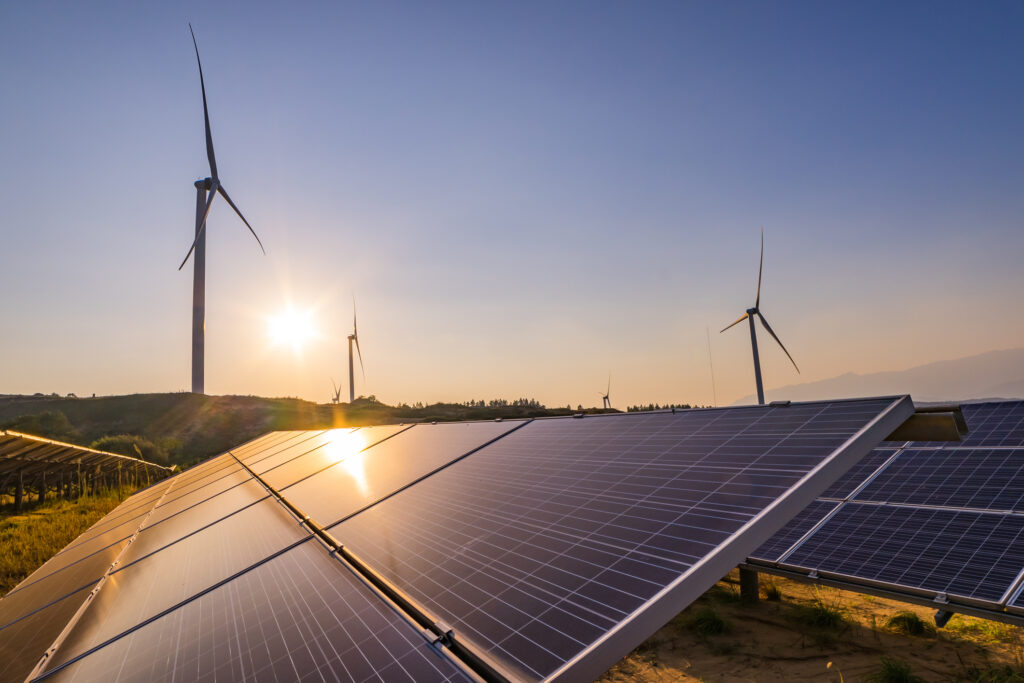
The Clean Economy Jobs and Innovation Act aims to address climate change and help grow jobs at the same time.
The House on Thursday passed legislation that aims to help the United States pivot into cleaner energy – and take advantage of the potential economic growth that could come from such an endeavor.
The Clean Economy Jobs and Innovation Act is a sweeping measure (more than 900 pages!) that includes major investments in clean energy infrastructure. House Majority Leader Steny Hoyer (D-Md.) noted in a speech on the House floor that the bill would invest in clean energy production, distribution, and storage; set new energy efficiency standards for buildings; and provide funding to help homes, schools, public buildings and manufacturing facilities to upgrade and improve their energy efficiency. The measure also includes investments in wind and solar and advanced nuclear technologies.
While addressing climate change is the motivating factor for the bill, Democrats argue that these efforts also will lead to economic growth and create jobs. Rep. Bobby Rush (D-Ill.) is championing an effort to create a “Clean Energy Workforce Development Program” that will “train workers to succeed and help America lead the clean energy revolution,” Hoyer said.
The measure also contains Buy America preferences to ensure that this work happens in the United States, with American-made materials, whenever possible.
“This bill seizes the moment and takes advantage of the economic opportunities that come from taking a bold approach to the global climate crisis,” Hoyer said. “House Democrats recognize that you can’t lead the clean energy economy if you refuse to believe that cleaner energy is necessary. Until we get serious about the dangers of the climate crisis, America will be unable to take advantage of its economic opportunities. That’s why this bill is so important and why I am urging all of my colleagues to join in me supporting it.”
With the consequences of climate change becoming more apparent, the United States needs to take steps to reduce its carbon emissions and transition to clean energy. Here at the Alliance for American Manufacturing, we believe that U.S. manufacturers have a role to play in this process – indeed, many of them already are leading the way.
But policymakers also have a role to play to ensure the United States not only will lead the way in these cutting-edge industries but also ensure production happens here at home. Not only will that create jobs and boost the economy, it will also help American workers and companies succeed on the global stage, especially when China’s state-owned enterprises – who don’t have to abide by the same level of environmental and labor guidelines – are among the top competition.
The Clean Economy Jobs and Innovation Act notably includes language from a bill introduced in 2019 called the Clean Industrial Technology Act. This measure would establish a new advisory council at the Department of Energy to coordinate funding to “develop innovative technologies for industrial processes” that would aim to reduce emissions in the industrial sector. The Department of Energy would also establish a technical assistance program to help state, local and tribal governments implement these new technologies.
The Clean Industrial Technology Act, introduced by bipartisan sponsors in both congressional chambers, has the backing of a range of environmental and industry groups, from the Environmental Defense Fund, Clean Air Task Force and Natural Resources Defense Council to the U.S. Chamber of Commerce.
And that makes sense. Policymakers, business leaders, labor organizations, and environmental advocates all know that American industry must reduce carbon emissions. But that will require innovation and cooperation.
“Addressing the climate crisis requires meaningful action to encourage decarbonization across all sectors of the economy. But, in the industrial sector, there remain many obstacles which demand additional research and resources to overcome,” said Rep. Sean Casten (D-Ill.), one of the cosponsors of the measure. “This bill would centralize research and development of low-carbon industrial technologies already underway at the Department of Energy while placing an emphasis on these efforts as an essential part of the agency’s overall work.”
The Clean Economy Jobs and Innovation Act now heads for the Senate. Given the shrinking amount of time left in the 116th Congress, it’s unlikely that it will become law, but the legislation does showcase what future legislation may look like, particularly if Democratic presidential nominee Joe Biden – who has a $2 trillion clean energy plan of his own – winds up in the Oval Office.
